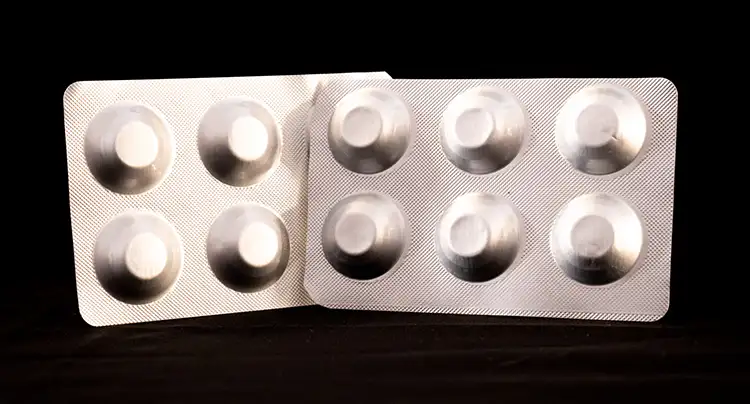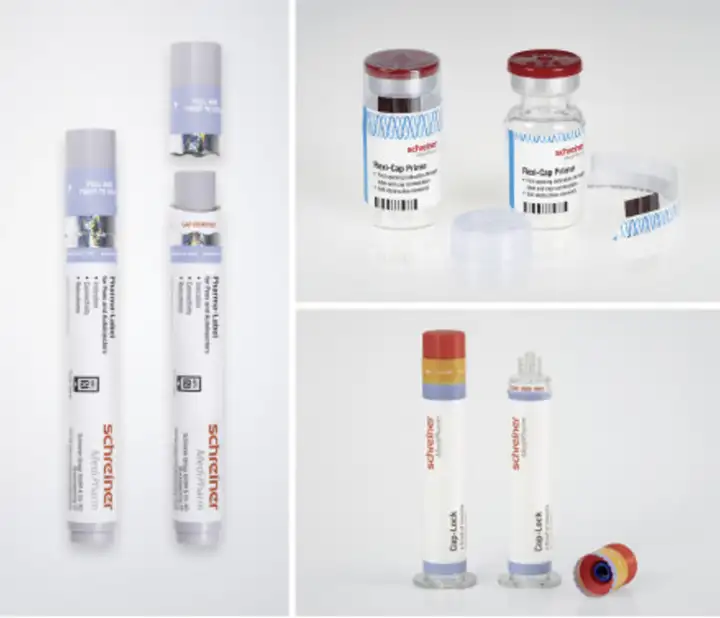
Med/pharma flex-pack market to reach $26.3 billion globally by 2028, as healthcare apps become “greener,” more sophisticated amid COVID-19.
Edited by Editor-in-Chief Mark Spaulding
As one of the fastest growing end-use markets for packaging and roll-to-roll (R2R) converted products, medical devices and pharmaceuticals have perhaps seen the greatest amount of change in just the past few years. With applications ranging from traditional items such as “simple” bandages and drug blister-packs to breakthrough printed-electronics biosensors, this field has been impacted in myriad ways.

The ongoing COVID-19 pandemic has had a deep and enduring effect on packaging supply chains (and medical/pharma in particular), according to a new study from Smithers (see Figure 1). The disruptions of 2020 continue into 2022, with soaring prices for polymer resins and other raw materials, creating a new imperative for businesses to reappraise their supply-chain, purchasing and logistics strategies. The re-emergence of sustainability concerns in packaging, including new legislative targets for minimum recycled content in plastic formats, has converters prioritizing the sourcing of post-consumer recycled (PCR) resins, in place of virgin feedstocks, more often for medical/pharma applications.
Flex packs are a key innovator
Amid these challenges, however, world packaging demand for PPE, medical devices and pharmaceuticals has not only held up well but grown at a more rapid pace, says Smithers. In the flexibles arena, med/pharma accounted for 14% or $5.1 billion of US flexible packaging sales in 2021, according to the Flexible Packaging Assn. (FPA). And globally, medical flex packs are expected to reach sales of $26.3 billion by 2028, based on a Research & Markets (R&M) report.
What’s behind the growth? R&M lists increasing demand for pharmaceutical products in emerging economies, as well as growing demand for high-tech drug-delivery systems in developed countries as key drivers. Use of flexible packaging is rising in the healthcare field as companies operating in the industry are opting for sustainable functions and materials, sometimes even moving to paper-based packaging for its “green” cache and recyclability. Some examples include developments by Mondi Group, WestRock and Huhtamaki.
One breakthrough medical flex pack is the 2022 FPA Highest Achievement Award winner, converted by Vonco Products LLC (see page 12). The patented EnteraLoc™ medical-fluid device for tube-fed patients features flexible, standup pouches with custom spouts. Along with recognition for packaging excellence, sustainability and technical innovation, the EnteraLoc was honored for expanding the use of flexible packaging.

“Greener” pharmaceutical packs
As important as one-time-use medical/pharma packaging is for safety and patient care, this has not slowed the concepts of sustainability and recyclability in the materials used. R&M notes that pharmaceutical demand is propelling growth for flexible “green” packaging, especially in new and recyclable polymers. This area is climbing 9.1% CAGR worldwide to reach more than $644 billion overall by 2027, says R&M, with the pharma sector making up to $90 billion.
Sustainability in pharmaceutical packaging is exemplified by FlexFilms (USA)’s F-ISB-M BOPET film and laminate structure for cold-forming blister packaging. A 2021 AIMCAL Award Honorable Mention, the product from the manufacturing arm of UFlex, Ltd. replaces traditional PVC and/or Nylon layers with BOPET (see Figure 2). It has a lower carbon footprint and satisfies the global trend to remove chlorine-containing materials from medical packaging.
Biosensors, drug packs getting smarter
Another key trend impacting medical/pharma continues to be R2R printed electronics, with new concepts and commercial successes coming out regularly. The printed electronics market in healthcare is anticipated to grow 20.6% CAGR to 2026, according to Mordor Intelligence. Lower cost of R2R manufacturing, the use of digital printing, a rise in funding activity and the healthcare industry’s inclination toward the newest technologies are top factors responsible for growth of printed electronics in healthcare fields.
Large volumes of medical sensors regularly are screen-printed roll-to-roll, and this method is the basis of more advanced wearable medical sensors, such as smart skin patches. Stretchable conductive inks, dielectric inks and silver chloride inks are helping to make the electronic skin patches for measuring vital signs, heart rate, respiration and other physiological parameters.

The primary task of smart pharmaceutical packaging is to improve a patient’s medication adherence. Jones Healthcare Packaging actively has been developing this technology and now commercial samples are being tested by patients. The current product is printed flexographically using carbon inks on paper substrates to create carbon circuitry. In the future, functional electronics as well as printed displays could be integrated into the smart packaging itself.
Via cooperation with Schreiner MediPharm and PragmatIC Semiconductor, Avery Dennison is leveraging near-field communication (NFC) technology to extend smart packaging to the unit-level for everyday pharma to significantly improve patient safety and experiences (see Figure 3). Such low-cost NFC offers tamper evidence, secure authentication, end-to-end traceability and easy re-ordering. In the case of pharmaceutical products, it also can connect patients to not only easy-to-read instructions, but also video/audio guides, help lines, social-media support groups and even to their doctors or clinicians. The Schreiner labeling solution uses flexible, robust, NFC integrated circuits from PragmatIC, which are thinner than a human hair and suitable for small-diameter objects, such as syringes and vials.
Conclusion
So, what might the medical or pharmaceutical package of 2030 look like? With the trends covered in this article, a likely candidate is a flexible, standup pouch (having replaced a glass or plastic rigid container) that easily can be recycled and sports an intelligent label that communicates not only with the patient but with his or her physician for better long-term healthcare.
More info: www.smithers.com, www.flexpack.org, www.researchandmarkets.com, www.mordorintelligence.com

